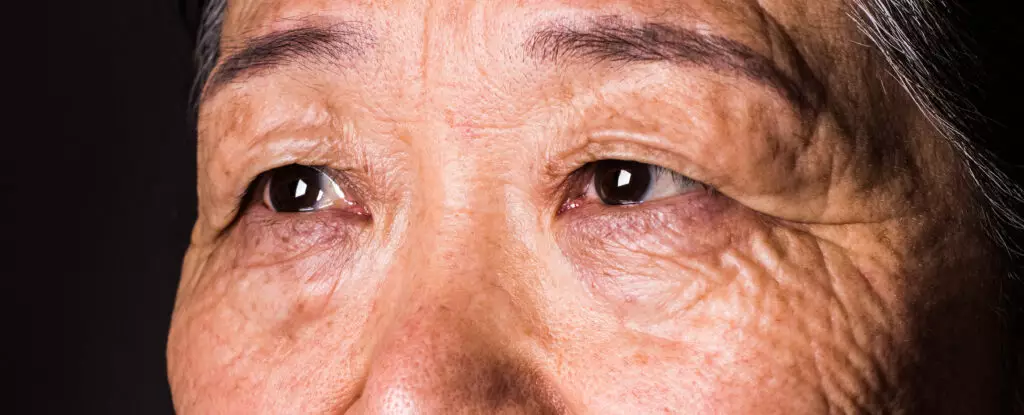The eyes are often referred to as the “windows to the soul,” but their significance extends far beyond emotional expression; they also serve as a critical indicator of cognitive health. Emerging research has revealed a profound link between visual sensitivity and the early onset of dementia, providing valuable insights into predictive measures that could revolutionize how we approach Alzheimer’s disease. A recent longitudinal study involving 8,623 participants revealed that diminished visual acuity could forecast dementia up to 12 years prior to clinical diagnosis. This groundbreaking finding invites a deeper exploration into how brain health manifests through visual capabilities.
What makes the connection between eyesight and cognitive decline so compelling? One hypothesis suggests that as amyloid plaques, synonymous with Alzheimer’s pathology, begin to accumulate, they first impair areas of the brain responsible for vision. This early manifestation could allow certain tests for visual sensitivity to act as precursors to more widely recognized cognitive failures, such as memory loss. Essentially, identifying visual problems could serve as an avenue to diagnose dementia at a considerably earlier stage, potentially enabling earlier interventions.
The Nuances of Visual Processing in Dementia
The implications of declining visual sensitivity extend beyond mere sight; they can unveil a range of cognitive deficits that affect daily life. Research indicates that Alzheimer’s disease alters multiple aspects of visual perception, including contrast sensitivity and color discrimination. Interestingly, early alteration in the ability to perceive specific color spectrums—especially blue-green—may pass unnoticed by individuals, masking significant cognitive decline.
Moreover, patients exhibit a peculiar form of “inhibitory control” inefficiency, demonstrating difficulties in filtering distractions. This challenge raises concerns about potential safety risks, particularly in contexts such as driving—a factor currently being examined at Loughborough University. The inability to disregard distractions may lead not only to diminished driving skills but also to greater risks of accidents and other dangerous situations.
Facial Recognition: A Subtle Yet Telling Harbinger of Dementia
Further complicating the landscape of cognitive decline are the challenges individuals face with facial recognition. Research reveals that people with Alzheimer’s tend to process new faces inefficiently, failing to follow normative scanning patterns that allow for effective memorization of facial features. In healthy individuals, the visual scanning sequence typically involves the eyes moving from the eyes to the nose to the mouth, facilitating the “imprinting” of faces into memory. When this process is disrupted, the inability to recognize individuals can emerge, often leading to feelings of disorientation and confusion for both the person with dementia and their acquaintances.
This recognition struggle can be seen as a consequence of inadequate visual movement rather than a mere failure of memory. If social interactions suffer due to inefficient eye movements, it is imperative that we consider the role of visual tracking as both an early symptom and a potential avenue for therapeutic intervention. Promisingly, research suggests that enhancing eye movement may serve to boost memory function, though the evidence remains inconclusive, necessitating further investigation.
The Role of Engagement in Cognitive Maintenance
Connections are also forming between lifestyle choices, visual engagement, and cognitive health. Individuals who engage in mentally stimulating activities, such as reading or watching television, exhibit better memory retention and a lower risk of dementia. The act of visually scanning text or images brings greater movement to the eyes, possibly strengthening cognitive function. Coupled with educational background, these habits may enhance “brain reserve capacity,” allowing the brain to better withstand the ravages of degeneration.
Although some studies indicate that specific eye movements could improve autobiographical memory, their efficacy remains at the mercy of various factors, such as handedness. Unfortunately, despite the potential advantages in memory treatment via deliberate eye movements in older adults, the practical application of such techniques remains limited in clinical settings.
Challenges and Future Directions in Early Detection
Despite the revolutionary potential of using visual assessments for early dementia detection, significant challenges remain. The array of eye-tracking technologies currently available is often prohibitively expensive, requiring specialized training for effective use and analysis. Until a more accessible, cost-effective methodology emerges, the integration of eye movement diagnostics into routine practices is unlikely.
However, the burgeoning insights from the research provide a compelling case for further exploration in this captivating interface between vision and cognition. The advancement of eye movement technologies holds the promise of not only improving diagnostic accuracy but also enhancing therapeutic interventions for Alzheimer’s disease and age-related cognitive decline. In understanding the poignant connection between our vision and cognitive health, we pave the way for more informed approaches to early detection and intervention, ultimately challenging the prevailing narratives surrounding dementia.

